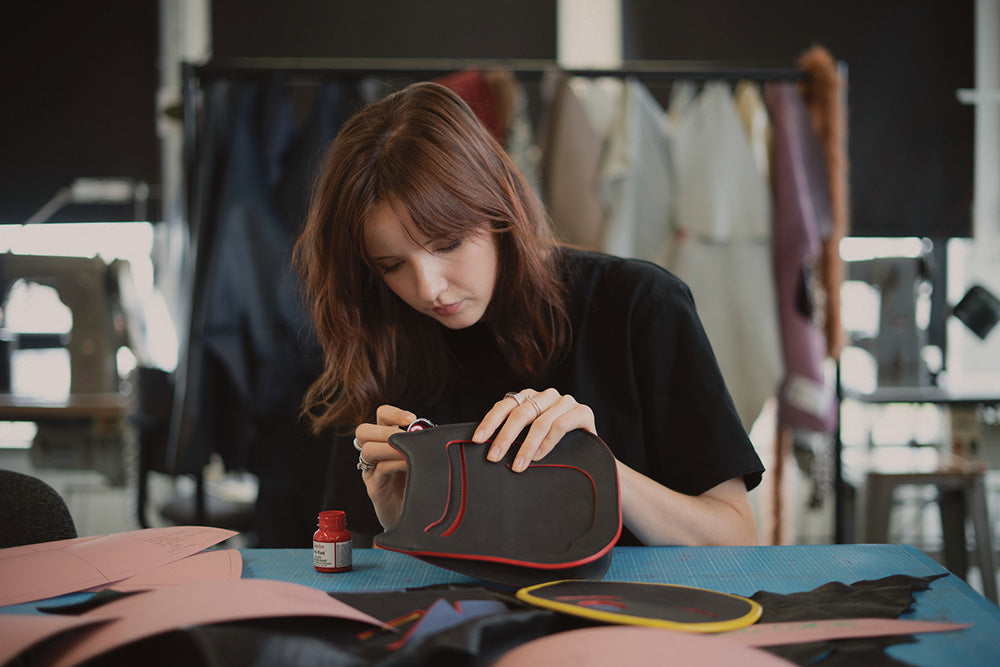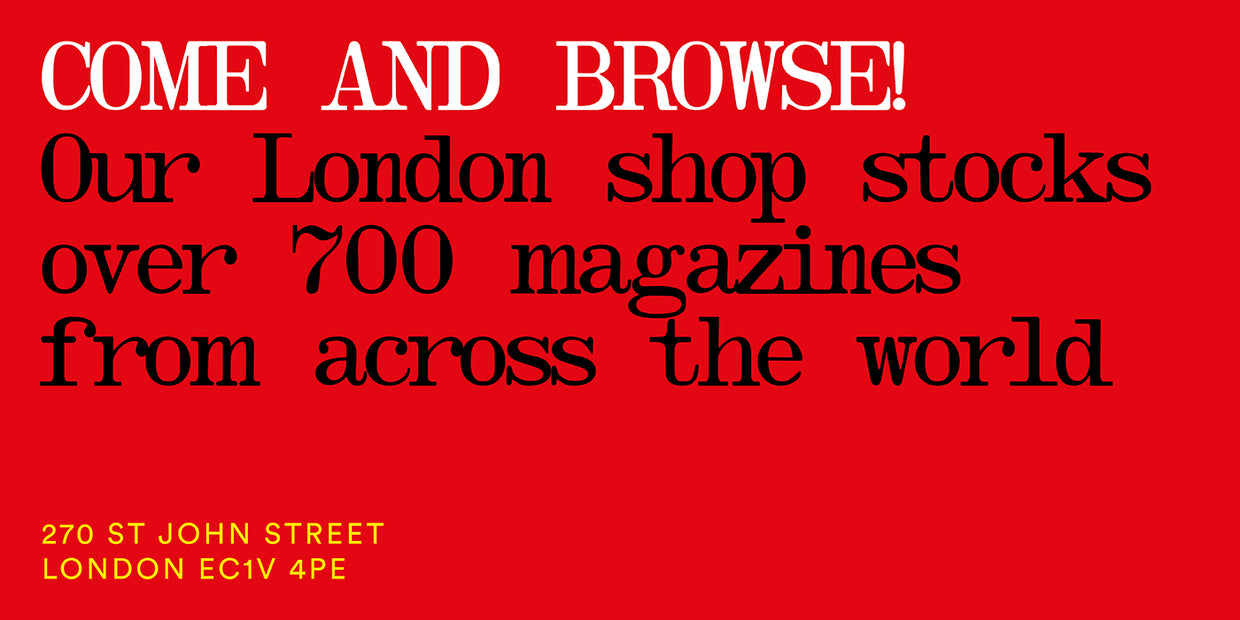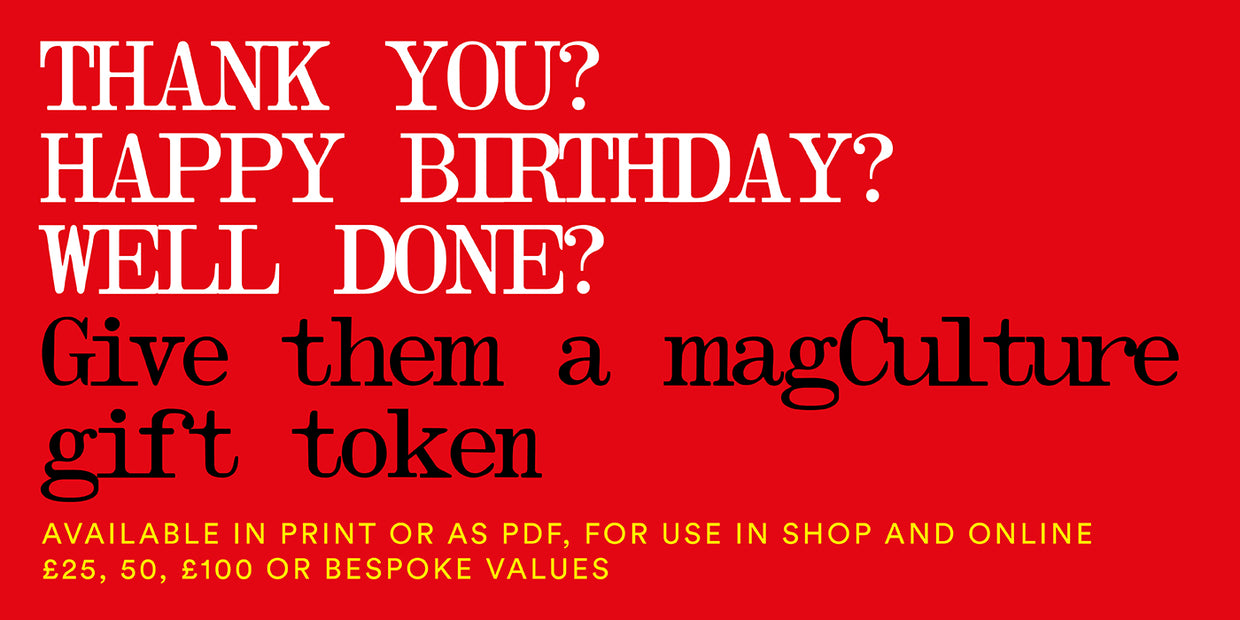
Morag Seaton, A Pocket Guide to Using Pockets
Morag Seaton is a Scottish designer and maker working across fashion, education, arts and culture, and garment technology. She’s just published a beautiful hand-finished zine, A Pocket Guide to Using Pockets.
‘The things that I make derive from conversations, workshops and other public engagement research I facilitate with people about their clothing experiences, understandings and fictional ideas. Each project starts with an everyday or speculative question that seeks to unpack the socio-cultural, environmental and personal significance of the objects we wear.’
Morag tells us more about her zine as she describes the idea behid it, her inspirations, and her working week.

What are you doing this morning?
I’m working from home in Peckham today, compiling my tasks for the week and getting through emails, lists, orders and other everyday admin. Today I’ll be working on a jacket commission, carefully cut out and constructed from denim offcuts, with each pocket detail shaped as an expression. A smile. A frown. I’ll start the day with the radio on, 6music or NTS, before blasting something like The Prodigy because it helps me sew faster. I usually work in the kitchen, it smells like freshly ironed cotton, black tea and Lidl pastries.

What can you see from your desk/ through the window?
When I’m sitting on my sewing machine, I’m surrounded by rulers, grading squares and piles of fabric. On the wall, there is a photograph of a ruin surrounded by lush Scottish greenery. I took this photo in Lochranza, the Isle of Arran, a home away from home. From my work bench I can see a very large blue pocket, and a large photograph of a man looking through binoculars, sitting on a wall with abnormally long legs. I think he’s watching me work.

Which magazine do you first remember?
When I was wee I would collect gold stars from my mum every time I did something good or helped around the house, at the end of a successful week I would run down to the corner shop and get my prize: a sticky-paged Girl Talk magazine, wrapped in cellophane and decorated with a myriad of pink, sparkly emblems, and occasionally filled with the latest sachet of glittery lip gloss or keyrings or stickers or other plastic treasure.
This was the late 90s/early 2000s. Thinking back, there was something comical (or just sad) about collecting a little magazine for empowering little women, in a shop lined with Nuts magazines and Yorkie chocolate bars labelled ‘not for girls’.

Which magazine matters to you the most this morning?
I was recently lent a copy of the White Review (no. 33), inside is a delightful essay called ‘Pocket Theory’ by Francis Whorrall-Campbell, which acts as a speculative response to Ursula K. Le Guin’s 1986 essay ‘The Carrier Bag Theory of Fiction’—another little book currently sitting on my shelf.
‘Pocket Theory’ feels like a refreshing take on pocket research, a space often saturated with dry academic interpretations. I’m always drawn to works that celebrate the weird lives and narratives of clothes and pockets.

Describe A Pocket Guide to Using Pockets in three words.
Pockets, play and the everyday.

How did you research the 12 ‘pocket rituals’ in the zine?
I co-run a collaborative practice called Worn, an organisation that engages people with the emotional and environmental significance of their clothes. We spend a lot of time documenting conversations with people (students, local communities, strangers on the internet) about their relationships with their wardrobes. Each conversation sits in a clothing archive encompassing hundreds of everyday garment stories. For Pocket Guide, each pocket ritual takes one conversation from this archive, and dissects and plays with it through a different performative pocket stance.

The research started with everyday observations of ordinary people, their mannerisms, the things they carry inside their clothes. I documented different pocket transactions through photography and illustration. I watched old television footage like the Pockets Quiz on Tonight (BBC Archive, 1962) where a reporter quizzes two young boys on the contents of their pockets, each child proceeds to take out a large collection of handkerchiefs, screws, cartridges, keyrings, badges, raffle tickets, sellotape… and a mouth organ.
I watched films like Gregory’s Girl (dir by. Bill Forsyth, 1981) and observed how each pocket interaction assisted with each character’s development; an anxious fist next to an empty pocket for a socially-fragile teen; a limp hand hanging casually in a bomber jacket for a coolly-composed younger sister. I made a pocket uniform; a collection of carefully constructed garments with multiple discreet and indiscreet pocket openings. The garments produced with Scottish linen, wools, factory rejects and other obsolescences.

The variety of guided rituals in A Pocket Guide ranges from everyday casual stances, to more intricate entanglements and bizarre positions. One example asks participants to reach into their inside pockets as though they were reaching for a weapon of choice. Another asks two participants to hold their hands in each other's breast pockets, as though they are conducting a strange dance. Accompanying this ritual is a story from the clothing archive:
‘Well I wore these dresses because I went dancing with him. I think I was wearing a dress that my mother had made, it was blue cotton with white spots. The tips had braid around there. Sleeveless. It was a typical 50s dress, you know that you see on these shows. I had flat, pumps on my feet. I thought I was the bees knees. Fortunately, your grandpa did too.’
The guided positions aim to collectively showcase the important relationships between the body and clothes for understanding individual characters and shared material cultures. They are designed to challenge preconceptions and reveal alternative perspectives of how clothes should be worn.

Can you see yourself developing Pockets into a series?
I really enjoyed making the pocket rituals, and although I’m sure there are many more rituals to be created, at the moment I’m working on another pocket book centred around the theme of the everyday commute. Named ‘The Commute: Journeys of a Pocket Scent’ the project collects stories from individuals, and documents the interactions they have with their pockets, spaces, people, sights and smells while on route to work, school, home and other places of connection.

The project celebrates the mundane, everyday commute whilst interrogating the socio-cultural and political structures of these daily endeavours, using clothing and scent as tools to explore these journeys. I had the privilege of working with some perfumers on this project earlier this year and I’m still in the process of collecting ‘pockets’ of commute tales from around the world (from the UK to India and Antarctica so far!) Navigating a project that deals with themes of travel, displacement and diaspora feels particularly poignant and important at the moment.
What one piece of advice do you have for someone producing their own magazine?
Collaborate. Working with other people is always the best part of creating, it’s never as fun when you do it alone. I’m very grateful to my dear friend Molly Davies for helping me create A Pocket Guide, and to all the people who contributed their clothing rituals to the archive.
What are you most looking forward to this coming week?
I have a few exciting meetings happening this week in anticipation of next year's collaborative projects. They will likely include conversations of circular fashion, 3D printed pockets, digital jackets and zero-waste workshops in Lagos.
moragseaton.com


